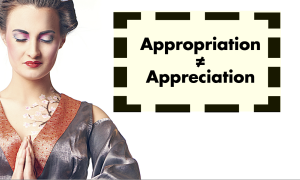
Source: Huffington Post
Why study race?
Ask students from a variety of racial backgrounds, and they’ll produce compelling reasons:
- “The conversations I have been part of and assignments that I have been given have taught me so much about myself, the experiences of others in the world, and how our nation’s history has shaped society.”
- “If it weren’t for this class, I would’ve been another stuck-up kid in the world who judges people constantly. Now I look at people and see more than racial profiles… This class changed how I see things and how I live my life.”
- “This curriculum prepared me for the world and made me a better person. It should be taught in every school.”
To those experienced in teaching about issues of race, the evidence of its necessity is overwhelming.
Students traditionally underserved by public education show increased engagement and improved attendance. High-achieving students of privilege better understand the confluence of factors that contribute to their high grades.
Lunch tables usually filled along racial lines become more integrated. Class discussions, which at their worst provoke puddles of desktop drool by napping students, become vibrant exchanges of experiences by emotionally invested students.
But such evidence is anecdotal at best.
In my experience working in Seattle Public Schools, data is what a public school district professes to value – hard, quantifiable data. And such hard, quantifiable data also testifies to the importance of teaching race.
Take the now-outlawed Mexican American Studies (MAS) program in Tucson Unified School District (TUSD), a district predominately Latinx with a long history of racial disparities.
This program, created to address these disparities, consisted of curricula that reflected the students’ histories, identities, and experiences. It led to dramatic improvements.
Before its banning by the state of Arizona in 2010, students enrolled in the MAS program were 64% more likely to pass their standardized tests than students of a similar background not enrolled in the program.
One TUSD study found that “98% of the MAS students reported that they did their homework, and 66% went on to college.”
In 2011, the national push-out rate – also known as drop-out rate – for Latinxs was 56%. And the rate for MAS students? 2.5%.
The evidence to teach race may be overwhelming, but here’s what public schools do instead.
1. Public Schools Sanitize the History of the Struggles of Marginalized Groups
In the fall of 2014, protests temporarily shut down schools in Jefferson County, Colorado, as students walked out and teachers staged “sick-outs” to resist proposed changes to the Advanced Placement (AP) United States History course, a course the seemingly all-White school board member deemed anti-American.
Opponents to this AP class believe that “…there is too much content about women, slavery, and Native Americans.” (While writing this, Oklahoma legislators voted to outright ban AP US History. Others states will likely follow.)
Just weeks later, a similar battle drawn along ideological lines took place in Texas, as groups battled to influence the predominately White Texas State Board of Education during a textbook adoption process based on controversial state standards.
The NAACP contended that these standards, adopted in 2010, minimize atrocities against Black Americans, including slavery and Jim Crow.
Furthermore, a review of the standards by historians and professors revealed that “83% of the required historical figures and notable persons for students to study are white. Only 16% are African American or Latino” (as if only three racial/ethnic categories exist).
It’s nearly impossible to understand current manifestations of racism if you’re denied the historical context that built the present. It’s virtually impossible to understand the contributions of people of Color throughout this country’s history if those contributions are omitted from the curriculum.
Such censorship effectively “bleaches” the curriculum, which, as Jessica Williams said (in reference to “Stand Your Ground” laws), “works miracles for whites, but will ruin your colors.”
In public education, deep-seated racial disparities are as common as textbooks and one-size fits-all-butts plastic chairs, whether you analyze push out (drop-out) rates, discipline rates, access to advanced classes, and let’s never forget the school-to-prison pipeline.
In fact, a recent federal study exposed that racially disproportionate discipline practices occur as early as preschool – Black preschoolers, for example, make up 18% of preschoolers, but nearly half of those who are suspended multiple times – which means we may need to rename the school-to-prison pipeline the preschool-to-prison pipeline.
But it’s overly simplistic to blame conservative White politicians for laundering the country’s history with bleach.
Even in “liberal” (but still very White) bastions like Seattle, in which progressive policies are passed to benefit marginalized communities, shit still happens – and students of Color (particularly Black, Latinx, and Native students) ultimately pay the price.
2. Public Schools Relegate the Study of Race to History
Despite the suppression efforts of these predominately White governmental bodies of Colorado and Texas, the subjects of race and racism are indeed broached throughout American public schools, nearly exclusively in history and literature classes (and perhaps a number of science classes).
But here’s why racism taught exclusively in a historical context can be problematic:
1. The most obvious reason: Racism is not a thing of the past, a fact the Black Lives Matter movement has demonstrated powerfully through continued protests.
However, when education locks racism into the past, it creates misconceptions about present-day racism.
As countless United States history teachers scramble to make it through the Vietnam War before summer vacation arrives, students are left with impression that the struggle for racial justice ended when the textbook chapter on the Civil Rights Movement did.
Even if the school year extended into July, there is no textbook chapter on mass incarceration (except in the rare case a teacher assigns The New Jim Crow). There is no chapter on modern-day microaggressions.
Many strong teachers may indeed weave in current connections to historical periods and literature selections, but I have yet to encounter a state standard mandating that they do so.
Without state standards institutionalizing the study of current racism, there is little protection for teachers when they must face a family on a rampage against such studies.
2. When you lock the study of race and racism into the past, the representation of people of Color is usually restricted to representations of subjugation.
(However, if teachers rely on The Zinn Education Project, students might at least also learn about the resistance movements against such subjugation.)
For example, when studying World War II, Japanese Americans finally get to see themselves represented (hurray!) – just in time for incarceration (shit!). When Black Americans first see themselves in the curriculum, they generally see images of Black people in chains.
A curriculum that explores modern racial identity – in addition to the past – could solve this issue, one that explores cultural elements that instill pride.
Such a curriculum with an emphasis on identity development is dramatically improving the suspension rates of Black boys in Oakland, a district recently under federal investigation for racial disparities, and is desperately needed for Black girls. But, again, no state standards I know of mandate such an exploration of identity.
3. Even without government officials censoring the experiences of historically oppressed groups, history classes as they’re commonly taught overemphasize White people.
If you don’t believe me, just turn to the index of the nearest history textbook and look up “Whites.”
Only the most recent editions will include a listing of subtopics, finally confirming White as a racial category. The rest exclude any listing except for historical figures with the last name of White.
In contrast, look up “African American,” for example, and the listing of subtopics fills the page (of course, many racial groups are commonly excluded, such as Native Hawaiians).
This trend doesn’t mean that these textbooks include more about people of Color than White people.
Rather, White Americans don’t get their own special section because the entire textbook is their special section.
(Similarly, look up “women” and you find a lengthy list, while a search for “men” or “male” turns up little. Men, like Whites, get the whole textbook.)
As a result, the history of Native and Indigenous people often begins with the arrival of Columbus (regardless of how honestly his atrocities are taught). In fact, US history classes might be one of the few places that regularly represent Indigenous groups. Film and television certainly aren’t doing the job.
But freezing their inclusion into the past unsurprisingly creates a host of misperceptions and stereotypes dressed in loincloths. (To show the ridiculousness of such limited representation, imagine if the exclusive image of White American men throughout history sported stockings and Full Bottom Periwigs.)
3. Public Schools Allow White People to Dictate the Curriculum and Shut Down the Study of Race
Attacks on the study of race come can come from anywhere, though they seem to come most often from White Americans who have yet to confront this country’s racist past.
In the case of Arizona outlawing the Mexican American Studies program, it was White government officials who led the charge.
In opposing the program, then Arizona Superintendent of Public Instruction Tom Horne invoked a colorblind approach to race, even going as far as to say that racial identity is “primitive” and “tribal.”
As a result of Horne’s efforts, Arizona lawmakers passed a law in 2010 banning courses that “promote the overthrow of the US government, foster racial resentment, are designed for students of a particular ethnic group, or that advocate ethnic solidarity,” ending a program that did what so few public schools successfully do: decrease racial disparities.
Horne’s successor, John Huppenthal, continued the attack on such studies of race, even banning the use of a poem by Luis Valdes, songs by Rage Against the Machine and KRS-One, and classes devoted to African American studies.
(Note that he was able to do all this despite being outed as a racist who posted anonymously on both liberal and conservative blogs.)
Government officials are not the only ones shutting down the study of race. Sometimes, all it takes is one parent.
In 2012, the complaint of one parent, presumably White, pulled the plug on a study of White privilege in an “American Diversity” course at Delavan-Darian High School in Wisconsin.
In rhetoric very similar to Tom Horne’s, this one parent told Fox News, “They’re teaching white guilt. They’re dividing the students.”
As if labeling the systems of oppression firmly in place, like White privilege, causes the systems. That’s like saying that labeling domestic abuse causes the battering and psychological scarring.
If mischaracterizing racial identity and White privilege was not enough, White people also file complaints of intimidation to shut down conversations on race.
That’s exactly what happened to communications professor Shannon Gibney at Minneapolis Community and Technical College. Three White students objected to discussions of structural racism and filed a complaint against Gibney, alleging such discussions caused them discomfort.
The administration initially reprimanded Gibney, but the reprimand was later rescinded, perhaps not coincidentally after she threatened to sue. (As a public high school teacher, I survived a strikingly similar attack, but that is a story for a future article.)
***
A solution to these issues is a simple one: Fight like hell to expand the offerings of ethnic studies class in our public schools.
While I don’t love the term “ethnic studies” (as it perpetuates the idea that White is the norm), I do love that three districts have recently mandated an ethnic studies requirement: El Rancho (outside Los Angeles), Los Angeles Unified School District, and San Francisco Unified School District.
Let’s build on this momentum.
Of course, these districts consist primarily of students of Color, which meant there were few White Americans to stand in the way. We need to pass such requirements, as the University of Washington recently did, across this country, which means more White people need to join the cause.
Students studying their own history – as well as the experiences of others – should not be limited to a college course that some students may take (especially considering that not all people attend college).
Marcus Garvey once said, “A people without knowledge of their past history, origin, and culture is like a tree without roots.”
Such educational opportunities should be a required part of every student’s public education, so that we all better understand the roots that make us whole.
[do_widget id=”text-101″]
Search our 3000+ articles!
Read our articles about:
Our online racial justice training
Used by hundreds of universities, non-profits, and businesses.
Click to learn more




















